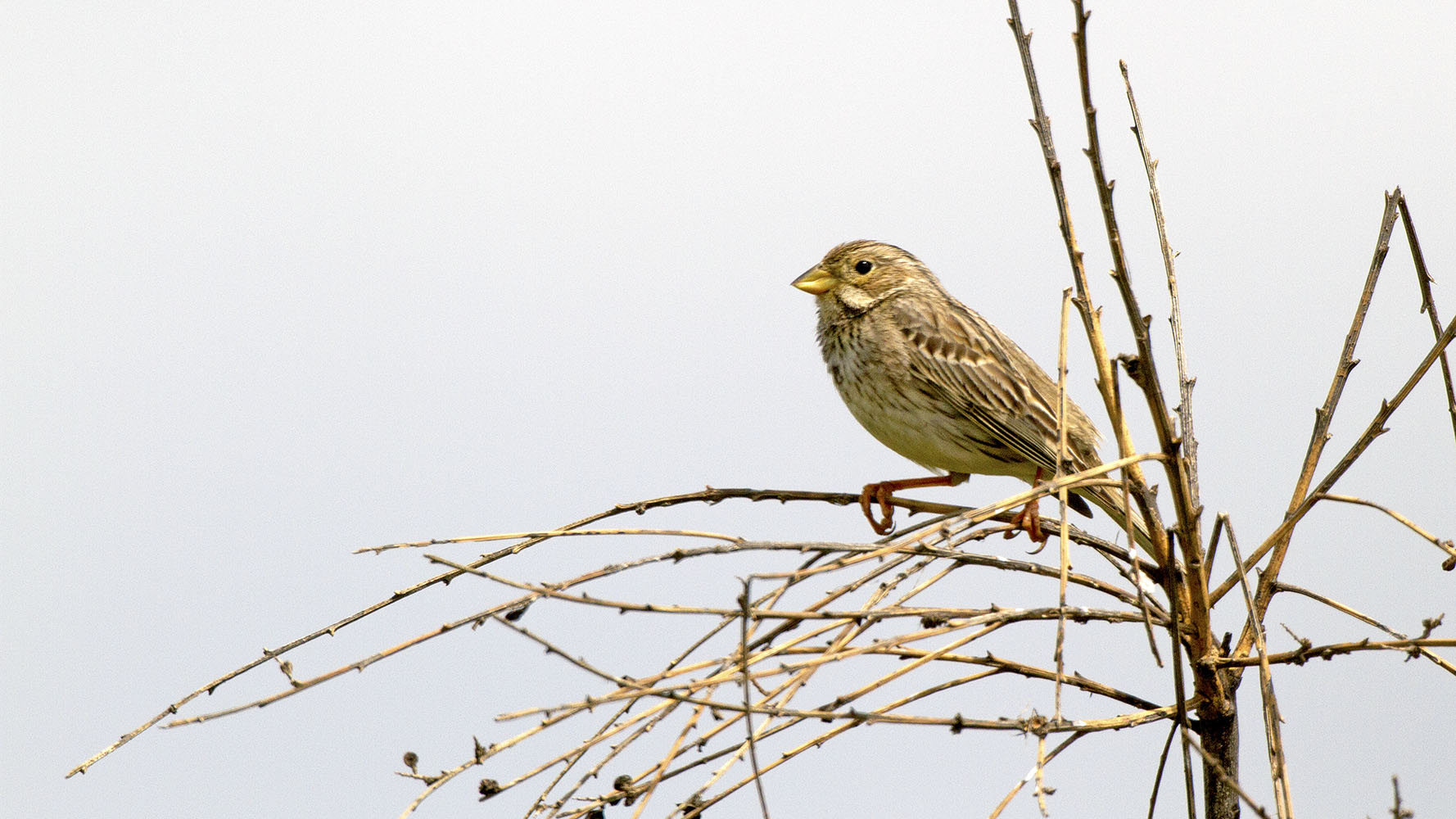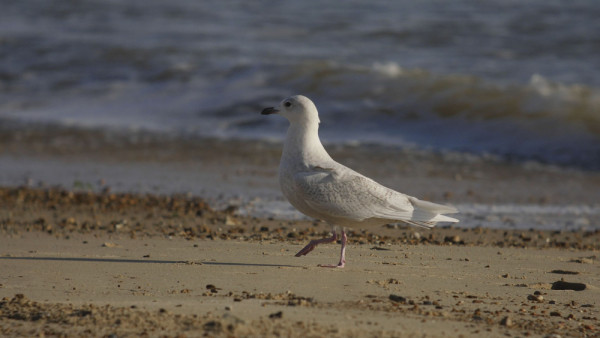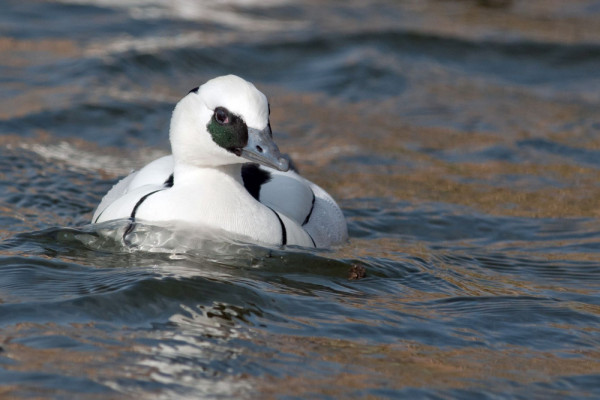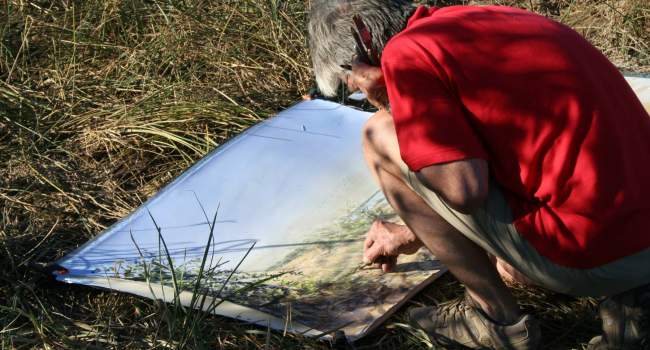
Migration Blog (mid-December – mid-January)
The midwinter period is certainly one of the quietest when it comes to migration across Britain and Ireland. Those species that arrived for the summer are either still migrating to their wintering areas or have arrived there already. The bulk of our winter visitors have arrived by now and will spend the next few months trying to survive the winter weather before preparing for the forthcoming breeding season.
The last four weeks have seen mild conditions interspersed by a brief cold snap that brought overnight frosts and a dusting of snow to several lowland locations. The milder weather has seen a few summer migrants still hanging around into December, with Whitethroat, Garden Warbler, Wood Sandpiper, Swallow and Whinchat all reported from across Britain and Ireland. However, as would be expected for the time of year, these were in the minority and the main migrants arriving in Britain and Ireland very much had a wintery feel, with wildfowl and thrushes being the most commonly reported species. After a slow start to the winter period, European White-fronted Geese finally started to arrive in good numbers in the last week of November and first week of December, with flocks noted across Britain and Ireland; Sandwich Bay held over 500 birds at times. Tundra Bean Geese also arrived during this period, increasing the BirdTrack reporting rate, and flocks were noted along many east coast locations with a few birds making it further inland. The arrival of these two species is most likely due to a spell of colder weather that pushed westwards from Russia into Eastern Europe, coupled with some easterly winds during this time. Bewick’s Swan, another species that has arrived in lower numbers, used these winds to arrive in greater numbers during early December and their reporting rate is now around the historical average. Several large flocks of Pink-footed Geese were reported away from their traditional coastal haunts and flocks could be found well inland and flying past some coastal watchpoints; it is well worth checking local flocks of geese for all of the mentioned species as the odd bird can often be found associating with their more common Greylag and Canada Goose cousins.
As yet, it seems like it is not going to be a Waxwing winter with reports of birds few and far between. Looking at the latest EuroBirdPortal maps, which uses BirdTrack records from Britain and Ireland in its visualisations, they show that across Europe most of the Waxwings are in Sweden and haven’t moved any further south or west for a few weeks. A prolonged spell of cold weather or a lack of food in the coming weeks could see these birds start to move further south across Europe.
Since the last blog a few rarities, mainly from America, were found. Ireland got the lion's share of these, the highlights being Northern Ireland's first Bufflehead in Co, Down, a Belted Kingfisher in Co.Cork, and a Double-crested Cormorant in Co. Kerry. Not to be outdone, Cornwall hosted a Sociable Lapwing from Asia, and elsewhere there was a Crag Martin from southern Europe in Kent, a Franklin’s Gull in North Yorkshire and Fife played host to a splendid Hudsonian Godwit.

Species Focus - Iceland Gull
Iceland Gull is one of those birds that perhaps should be given another name. In the same way that Common Gull isn’t that common, Iceland Gull doesn’t really come from Iceland.
Iceland Gulls breed across northeast Canada, Baffin Island and east to Greenland, only visiting Iceland during the winter months. Birds begin to arrive in Iceland in September and remain through to early May. Some of these birds move further south and east to the Faeroes and Britain and Ireland, typically arriving in the latter during October and November. However, the majority of reports of Iceland Gulls in Britain and Ireland come later in the winter.
This year there have been reports of large numbers of Iceland Gulls in the Faeroes and it is likely that some of these birds will move further south and east as the winter progresses. Right now, there are small numbers of Iceland Gulls in Britain and Ireland but this is definitely a bird to look out for during the next few weeks.
Iceland Gulls are mostly coastal but individuals can turn up anywhere and inland gull roosts and refuse tips regularly hold an Iceland Gull or two during the winter months.
Two races of Iceland Gull occur in Britain and Ireland: glaucoides, from the Greenland population, is the one that is found most frequently compared to kumlieni, which breeds further west into Canada. Glaucoides tend to have paler, almost white, wing feathers, whilst in kumlieni these feathers have a darker biscuit-coloured shadow on them. However, not all birds are separable in the field but both can and do turn up anywhere.
In a typical winter, there might be around 100–200 Iceland Gulls in Britain and Ireland; it will be interesting to see if we do get a major influx this winter, like that being experienced in the Faeroes.
Gull roosts are a good way of learning your gulls, as they are often settled which allows you time to compare species side by side.
Looking ahead
The coming weekend looks set to stay mild, with rain forecast for most parts at sometime during the weekend. Indeed, at the moment this theme seems likely to continue into the festive period and New Year with any colder weather being short-lived. This settled weather will keep most species where they are with little movement to and from Britain and Ireland. During this settled time it is good to look for flocks of birds and to go through them on a regular basis to look for scarcer species that may be associated with their more common cousins. Flocks of Wigeon or Teal could be harbouring one of their American counterparts: American Wigeon and Green-winged Teal. Goose flocks could hide a Greenland White-fronted Goose, Taiga Bean Goose or maybe even a Red-breasted Goose. Mixed finch and Bunting flocks are great at this time of year and can produce a variety of species such as Chaffinch, Brambling, Yellowhammer, Lesser and Common Redpoll, Reed Buntings, Tree Sparrow, or maybe something scarcer such as Little Bunting, Pine Bunting, or Dark-eyed Junco. These flocks can be huge and mobile moving from one food source to another. Hedgerows are a good place to look, especially if there are game strips closeby, or weedy areas. Although not a favourite of many birdwatchers, gull flocks are also worth a look as they too can contain several species including Herring, Lesser black-backed, Black-headed and Common Gull. As with finch flocks, gull roosts can produce scarcities such as Mediterranean Gull, Kittiwake, Ring-billed Gull, or Iceland and Glaucous Gulls. Roosts are a good way of learning your gulls, as they are often settled which allows you time to compare species side by side to see how features such as leg colour and the colour of their backs (mantle) vary between species and age group. You are then also able to compare size and shape with other species you‘re more familiar with.

Any colder weather over the coming weeks could force birds to move around, especially if there is snow cover or prolonged freezing, as this can result in birds being unable to get to their food source due to it being covered by snow or locked under frozen water. These conditions don’t necessarily have to occur here; plummeting temperatures across eastern Europe can force birds westwards in search of warmer weather where they can find food once more. Species that are typically driven by cold weather are ducks and other wildfowl, waders such as Lapwing, Golden Plover, Snipe and Woodcock, and thrushes including Fieldfare, Redwing, Blackbird and Song Thrush.
Colder weather across Britain and Ireland can drive some species to our towns and gardens, with Woodcock, Fieldfare and Redwing all likely to occur during severe cold snaps. Providing apples is a good way of attracting the latter two species. Checking the birds coming to your feeders can be rewarded with species such as Reed Bunting, Yellowhammer, Tree Sparrow, Lesser Redpoll, Brambling, Hawfinch or Lesser spotted Woodpecker. Many of these are scarce visitors to some gardens, but can turn up at this time of year as they search for food.
Whatever you get up to, we wish you a happy holiday season and a bird-filled New Year!







Share this page